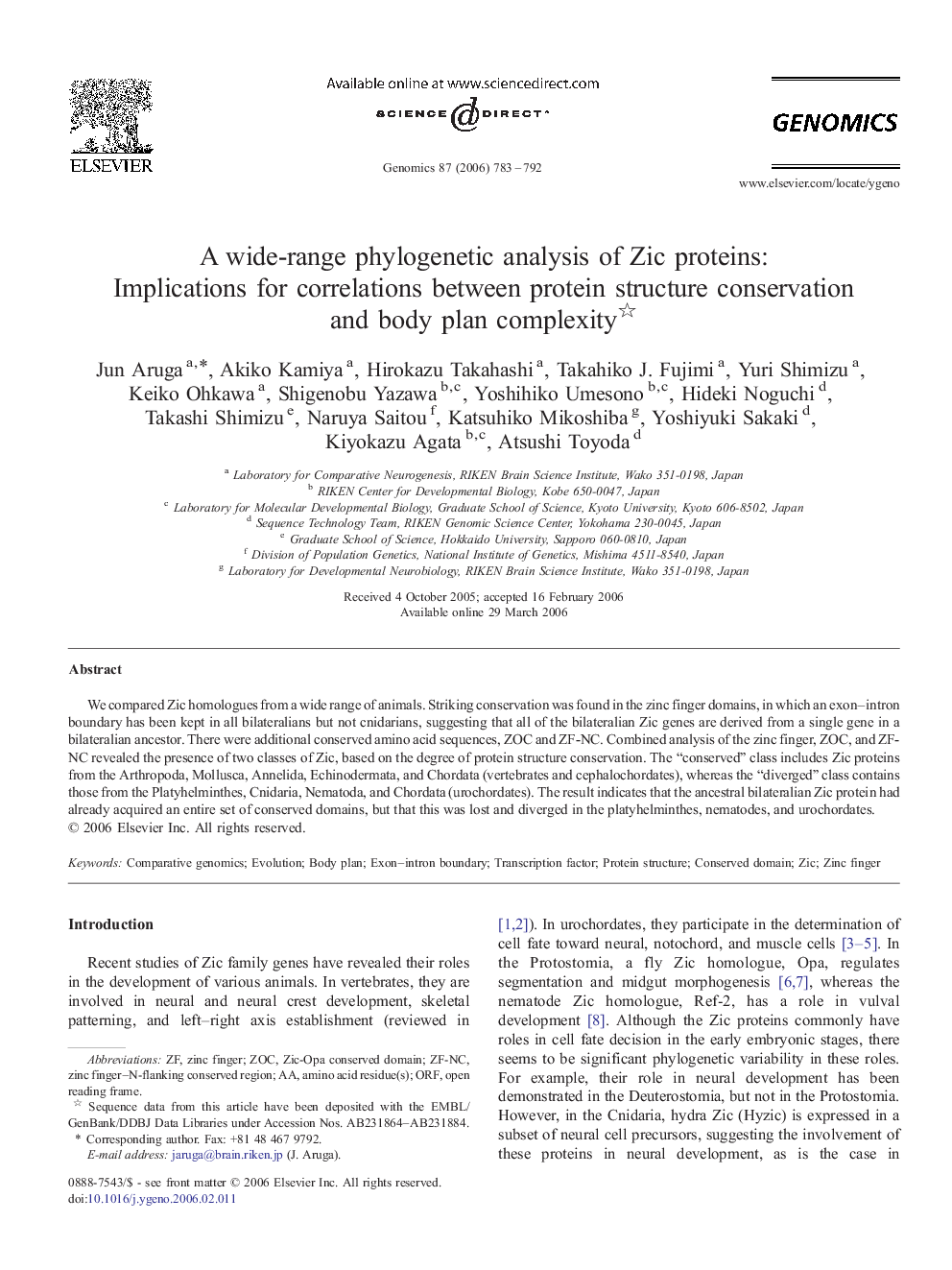| Article ID | Journal | Published Year | Pages | File Type |
|---|---|---|---|---|
| 2821748 | Genomics | 2006 | 10 Pages |
We compared Zic homologues from a wide range of animals. Striking conservation was found in the zinc finger domains, in which an exon–intron boundary has been kept in all bilateralians but not cnidarians, suggesting that all of the bilateralian Zic genes are derived from a single gene in a bilateralian ancestor. There were additional conserved amino acid sequences, ZOC and ZF-NC. Combined analysis of the zinc finger, ZOC, and ZF-NC revealed the presence of two classes of Zic, based on the degree of protein structure conservation. The “conserved” class includes Zic proteins from the Arthropoda, Mollusca, Annelida, Echinodermata, and Chordata (vertebrates and cephalochordates), whereas the “diverged” class contains those from the Platyhelminthes, Cnidaria, Nematoda, and Chordata (urochordates). The result indicates that the ancestral bilateralian Zic protein had already acquired an entire set of conserved domains, but that this was lost and diverged in the platyhelminthes, nematodes, and urochordates.
